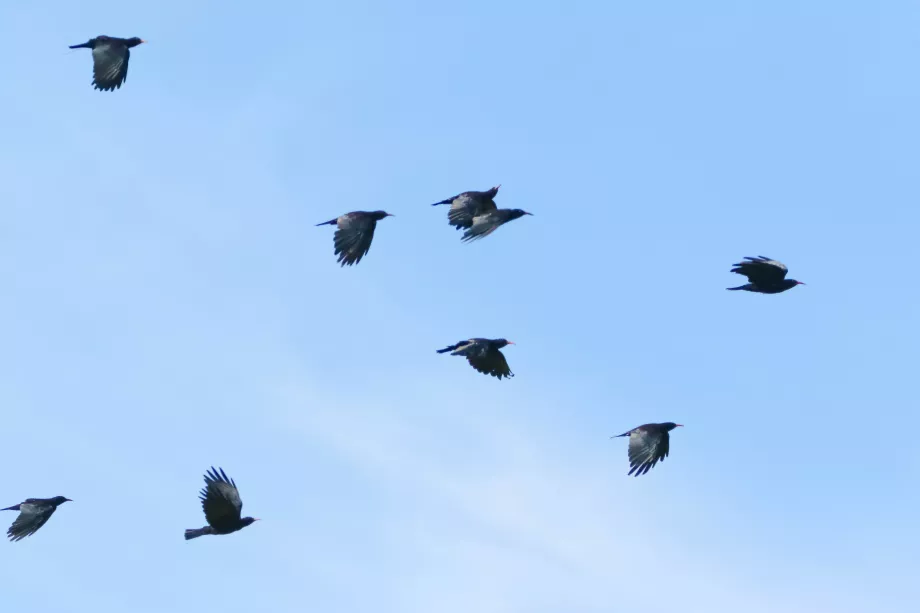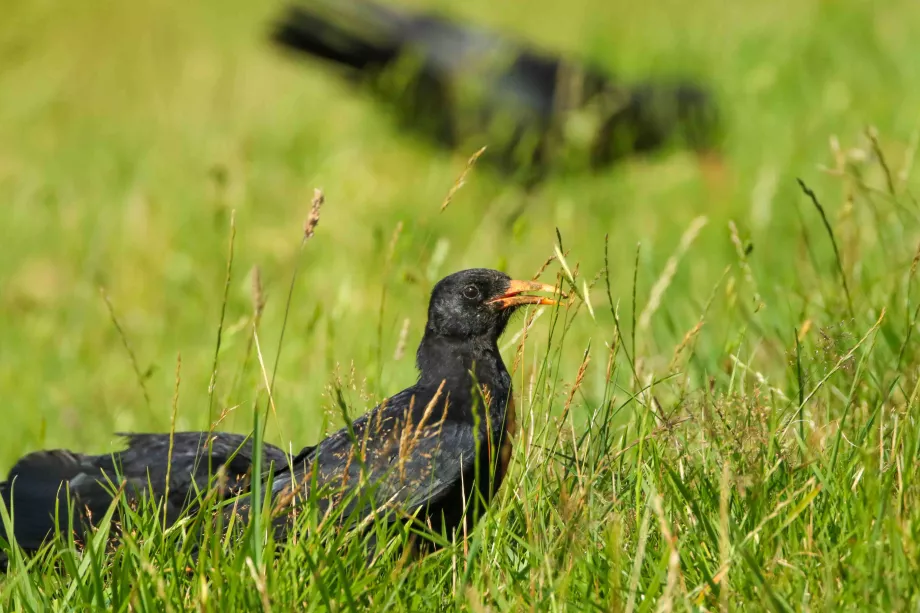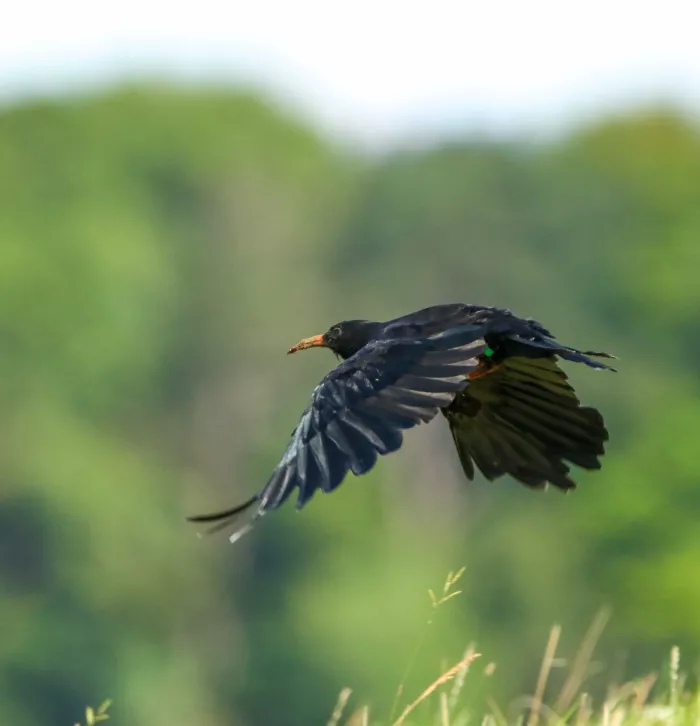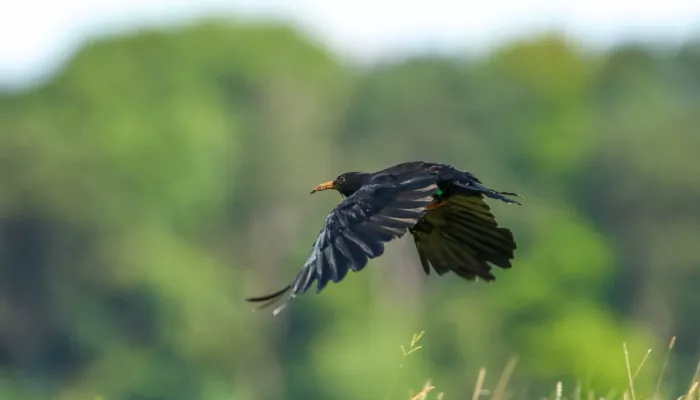
Tim Horton
Director of Conservation for Kent Wildlife Trust, Paul Hadaway explains:
“The red-billed chough reintroduction project in Dover demonstrates that, even with the perilous state of nature and wildlife in this country it is still possible to restore nature and return missing species. The project is rooted in strong science and feasibility work and several decades of concerted habitat restoration. We have laid the foundations for a successful release program that will see this flagship bird reestablished in a county with which it has a long cultural association.
“Creating and connecting habitats at scale has been the starting point for the red-billed chough's journey back. Chalk grassland is an incredibly rare habitat and is considered the UK's equivalent of the rainforest. Grazed chalk grassland can contain as many as forty species per square meter and supports hundreds of species of invertebrates. It is an incredibly important habitat, and conservation grazing management by animals is crucial to maintaining its diversity.
"In Dover, Kent Wildlife Trust has been working with landowners and partner organisations for over forty years to restore chalk grassland. This restoration effort is predicated on returning grazing to areas, preferably with organic livestock. Their dung contains beetles and other insects, which are essential for the chough's diet.
“Dover sits at the end of a network of several chalk valleys, each flanked by chalk downland habitats that have been progressively restored. Feasibility studies indicated, and the evidence of bird releases to date shows, that we have a critical mass of habitat here making it an ideal location to bring back the chough."
Director of Conservation at Wildwood Trust, Laura Gardner, says:
“The arrival of the chick was such a momentous milestone for the project and an unexpected joy that came much sooner than we’d anticipated.
“While we were disappointed by the disappearance of the chick we were heartened by the fact that its very existence showed that creating an established breeding population of chough in the wild in Kent for the first time in generations was very much within our reach.
“Little more than two years ago there was no chance of seeing a chough in the South Eastern sky line, now there are 19 flying free over Dover. It’s a huge achievement and credit goes to all the team for making it happen.”
The project plan is to release between 30 and 50 over the course of the five year project. Nationally, it is hoped the Kent population will be the first in a series of planned chough restoration projects along the south coast of England which could act as stepping stones to join up remaining isolated and fragmented populations. This is being facilitated by a Southern England steering group, which includes Natural England and a number of NGOs.
The recolonised population of the chough in Cornwall demonstrates what is possible when the habitat is right, and this reintroduction project in Kent is driving further habitat restoration work across the south coast .
Alison Hales, a Director of Paradise Park in Cornwall, says ‘We have championed the chough for many years, building up a healthy captive flock and working with partners to re-establish them to former habitats. It’s wonderful to see them at Dover Castle and the surrounding areas, and great that people in Kent have the opportunity to see them fly free and hear their unique call once again.
We’ve been impressed with the vision of our partners at Kent Wildlife Trust, and especially by the stamina of the field team led by Liz Corry at Wildwood Trust who brings her skills from the releases on Jersey.’

Tim Horton
The chough was once native to Kent but became extinct in the county more than 200 years ago due to changing farming practices and persecution. The corvid’s long-standing association with Kent is exemplified by its appearance on the coat of arms of Canterbury. According to legend, choughs gained their red beaks and feet after a crow flew into the Cathedral and paddled in the blood of the murdered Archbishop Thomas Becket as he lay dying.
In 2021, a temporary chough aviary was built at Dover Castle to house four ambassador birds to help visitors learn more about the cultural and ecological significance of the iconic species.
Dave Hedges from English Heritage said staff were delighted when last October they made their first wild chough sighting when a pair paid a flying visit to the Castle, he said:
“Heritage is as much about wildlife and nature as it is about bricks and buildings. And after a gap of more than two hundred years, we are delighted to see the chough once more flying over Dover Castle and really pleased that English Heritage could play a small part in making this happen. According to legend, the chough’s red beak and feet are due to a crow alighting in the blood of Thomas Becket whose murder – it is claimed – was called for by Henry II. As Henry built the Great Tower at Dover Castle, there is some poetic justice in the chough returning to the castle.”
The project has been generously funded by a combination of project partners including Kent Downs National Landscape Farming in Protected Landscapes (FiPL) Grant, Natural England Species Recovery Grant, Allan & Gill Gray Philanthropies, The William Haddon Charitable Trust, Kent residents and local donors.

Can you help?
As the project looks forward to future bird releases, more funding is required and project partners are seeking additional support for 2025. To donate, visit the Just Giving page for Wildwood and Kent Wildlife Trust.
For more information about the project, visit Kent Wildlife Trust or Wildwood Trust websites.

